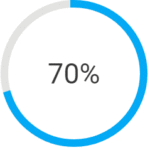Esther Bonney is a high school junior and the founder and director of Nurture Natives, a nationally recognized youth-led nonprofit driving change across the East Coast. Nurture Natives’ mission is to empower youth through environmental initiatives that enhance native biodiversity. She plans to pursue a career in environmental law, where she can continue her advocacy and drive transformative change on a larger scale. Alongside Nurture Natives, she enjoys playing the violin and caring for her five goats.
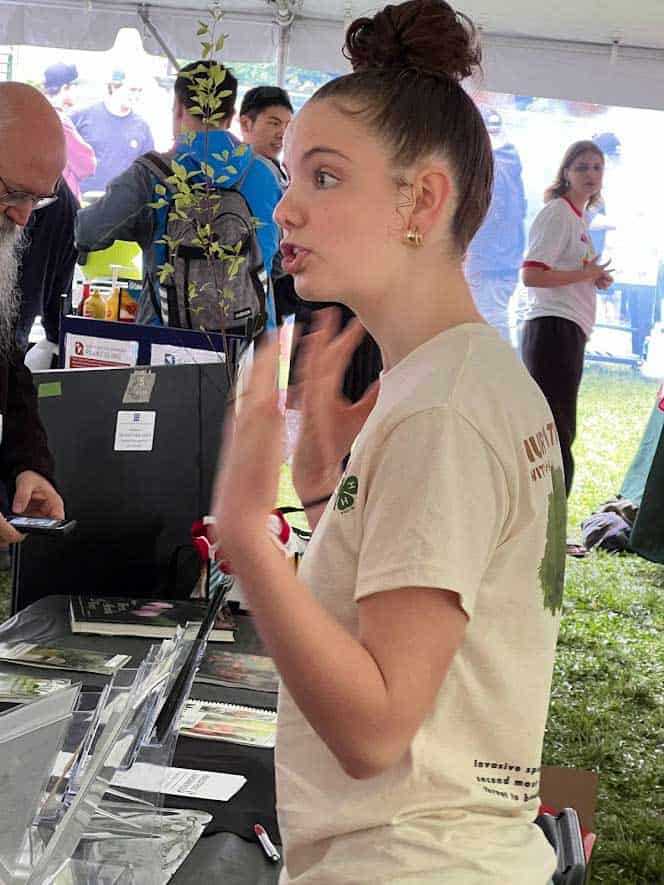
Marshall Cutchin: We were thrilled to hear about Nurture Natives from a friend of ours recently. It seems like a project that is both timely and unusual, in the sense that it speaks to school-aged kids about a lot of topics that have a mostly adult following. What inspired you to personally become interested in native plants, and how did it lead to you starting Nurture Natives?
Esther Bonney: My journey with Nurture Natives was inspired by a combination of passions and experiences. During an extremely challenging period of my life, I found solace and healing in nature, especially in the study of plants and insects. It brought me immense joy and a sense of purpose. Now, fueled by my deep love for native species and a commitment to preserving local biodiversity, I’m dedicated to protecting these ecosystems as a way of giving back for the hope and happiness they’ve given me. My commitment to advocating for mental health awareness among young people is another driving force behind my involvement. By empowering youth through environmental initiatives, I hope to foster an environment in which youth recognize their inimitable worth and capacity to make an impact.
Marshall Cutchin: Do you have the feeling that kids are ready to be engaged in these kinds of ideas?
Esther Bonney: Absolutely. Today’s youth are incredibly passionate about making a difference and are eager to learn about issues that are impacting their futures. I’ve witnessed firsthand how receptive young people are to learning about native biodiversity and environmental stewardship.
I’m deeply passionate about working with youth because I believe the success of our future hinges on the quality of leadership in our generation. We must begin making changes now before the turning point is no longer in sight. It’s crucial to start training the youth of our generation, equipping them with the skills to be courageous leaders, advocates, and changemakers. But first, perhaps even more importantly, we must convince them of their own capacity. They are more than good enough; their voices are powerful, and their passions are worthy. Nurture Natives is a call to youth to take the wheel. It’s time to pass the torch, and it’s time for us to pick it up.
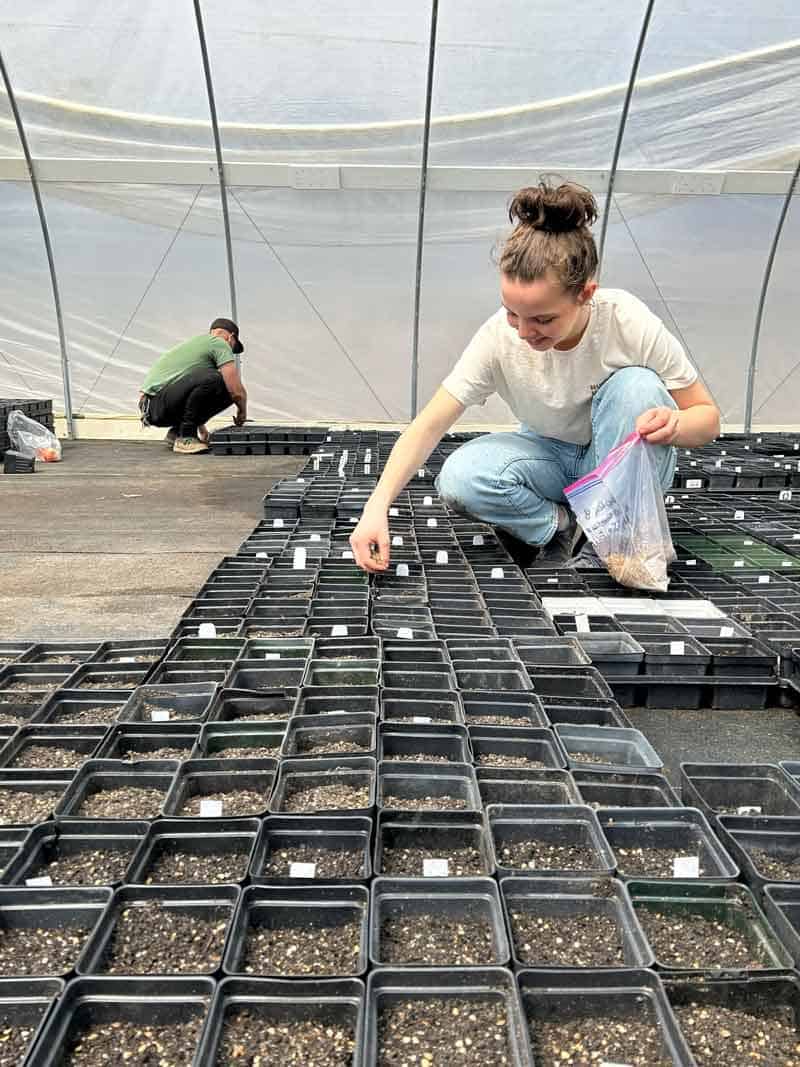
Marshall Cutchin: When we first spoke, you mentioned that you think interacting with the natural world has a positive effect on kids that might be dealing with mental health issues. Can you tell us a little more about that?
Esther Bonney: My dedication to advocating for mental health awareness is deeply intertwined with my belief in the transformative power of nature. We are facing a mental health crisis, a reality that has become painfully evident to me. At 13 years old, I lost my older brother to suicide. The pain and uncertainty that followed were almost unbearable. I felt completely lost and incomplete, spiraling into a mindset of worthlessness and purposelessness. Seeking comfort, nature became my refuge—a space where I could find peace and begin to heal. Countless walks along my local creek filled those days, where I first learned to identify native plants and pollinators. I rediscovered myself through the study of plants and insects. Through Nurture Natives, I found a platform to merge my passions for mental health advocacy, youth empowerment, and native biodiversity.
Nurture Natives addresses mental health through two main avenues. Firstly, we acknowledge and advocate for the intrinsic value of nature and its profound impact on mental health. Engaging with nature not only enhances our understanding of the natural world but also fosters crucial skills for stress management and emotional resilience, serving as a crucial support system for individuals grappling with mental health challenges in our modern society. Secondly, we empower youth to recognize their innate worth and purpose, laying the groundwork for positive mental well-being. Nurture Natives instilled hope and newfound confidence within me. I feel heard and empowered—and that is my wish for every young person. Through our work, we strive to empower each youth to embrace their unique voice and incredible potential to make a difference, fostering an environment where they can ignite their passions, amplify their voices, and drive positive change.
Marshall Cutchin: I’m touched by your story, and I’m sure anyone reading this will be as well. It makes your engagement with the natural world so much more understandable, and inspirational.
From your perspective as a high school junior, what do you think people your age aren’t getting from social media, school, or other “channels” when it comes to information about native plants, invasive species, etc.
Esther Bonney: While social media, schools, and other conventional channels offer valuable information, I believe they often overlook the importance of hands-on experiences. You must experience nature firsthand. Nurture Natives bridges this gap with interactive programs, which not only ensure practical learning that is crucial for understanding topics such as native plants, invasive species, pollination, biodiversity, and others. By planting native gardens and participating in restoration projects, young people gain firsthand experience with biodiversity conservation and ecosystem restoration, empowering them to take action in their communities. Moreover, spending time in nature has been scientifically proven to improve mental health, reducing stress levels by lowering cortisol and alleviating symptoms of depression. Science has found that just a walk in the woods or a stroll by the beach can evoke the innermost feelings of happiness and peace. In light of the mental health crisis affecting our generation, embracing the transformative power of nature is essential to nurturing resilience and well-being.
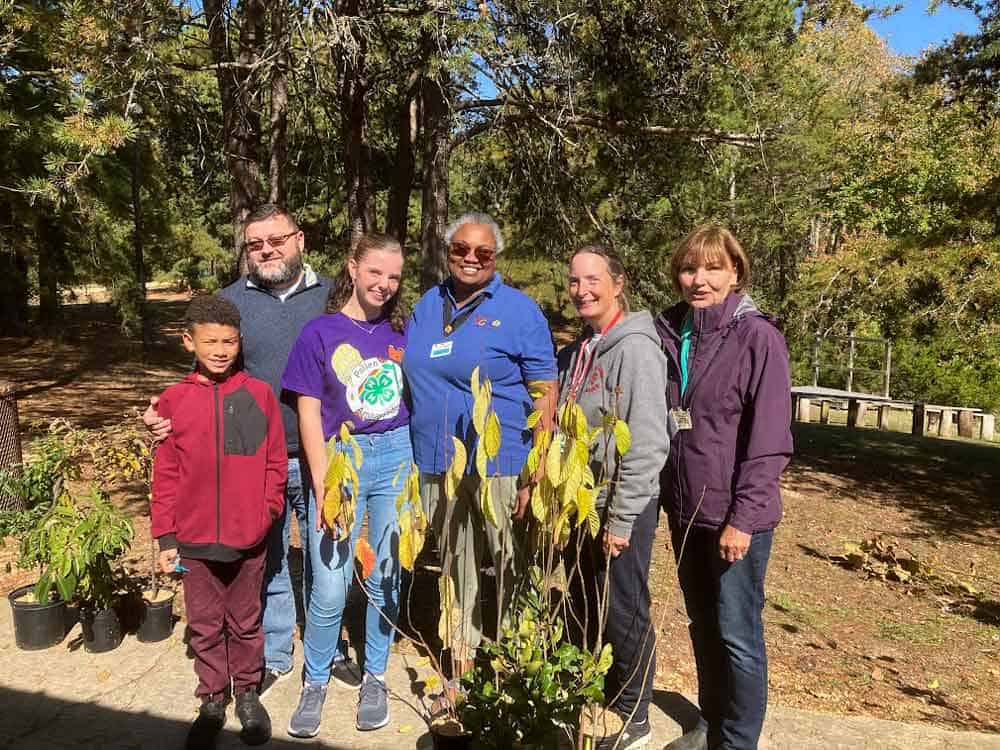
Marshall Cutchin: What programs is nurture natives engaged in now, what do you want to see it do more of, and where do you want to see it go as you move along the path of your own education?
Esther Bonney: Nurture Natives addresses invasive plant species—an issue intensified by urbanization and educational disparities—through three key objectives: inspire youth to take action through educational programs, increase the number of native plants and pollinators by hosting native plant giveaways, and encourage customers to make educated purchases by providing nurseries with “Nurture Natives” Guides. Our mission is to empower youth through environmental initiatives that enhance native biodiversity. To date, Nurture Natives has educated over 9,280 youth and 52,730 individuals, distributed 47,380 native seedlings and 550 free native saplings and shrubs, planted 2.2 million native seeds, and disseminated 150 Nurture Natives Guides to nurseries across seven East Coast states. I’ve had the privilege to discuss Nurture Natives’ mission with President Biden, Governor Moore of Maryland, the University of Maryland Dean of Agriculture and Natural Resources Dr. Craig Beyrouty, White House Press Secretary Karine Jean-Pierre, and TIME’s 2020 Kid of the Year Gitanjali Rou, among many others.
I hope to expand our reach to more communities, particularly underserved areas, and further integrate mental health advocacy into our programs. As I continue my education, I am committed to continue directing Nature Natives, and I envision Nurture Natives evolving into a national movement, empowering youth across the country to become environmental leaders and mental health advocates. In addition to expanding our existing programs, I would like to see Nurture Natives develop new initiatives that address emerging environmental challenges and promote innovative solutions. By fostering partnerships with schools, community organizations, and nationwide businesses, I aim to continue amplifying our impact. As Nurture Natives grows, my resolve remains resolute: to inspire, educate, and advocate for a future in which our youth and environment thrive.
Marshall Cutchin: Is there any interaction you’ve had with people or the community that was particularly meaningful to you?
Esther Bonney: Every interaction with my community holds deep meaning for me, but one memory stands out vividly. In April 2023, Nurture Natives had the privilege of participating in the University of Maryland’s Maryland Day, where we distributed 400 native saplings and shrubs. Our outreach extended to thousands of individuals from every county in Maryland and surrounding states. Sharing our mission and journey with both youth and adults, including the UMD Dean of Natural Resources and Agriculture, Dr. Craig Beyrouty, was incredibly rewarding. Witnessing their excitement as they received plants or learning about how they can make a difference filled me with joy. One conversation with a peer whose curiosity and passion were incredibly inspiring reaffirmed to me the significance of our work and advocacy. Such moments are what fuel my commitment to Nurture Natives and reinforce my belief in youth’s potential to drive change.
The connections I’ve forged along this journey have been invaluable. I owe a debt of gratitude to individuals like Ms. Marlene Smith, a University of Maryland Extension Master Gardener from St. Mary’s and the founder and president of the Wild Ones Chesapeake Bay Chapter. Her guidance and unwavering dedication have been a constant source of inspiration and joy.
Despite the challenges posed by the biodiversity crisis, I firmly believe that solutions lie within our grasp. By simply stepping outside, planting native gardens, supporting local nurseries and farmers, and engaging in active civic participation, we can contribute to the preservation of native ecosystems and safeguard the biodiversity that sustains us all.
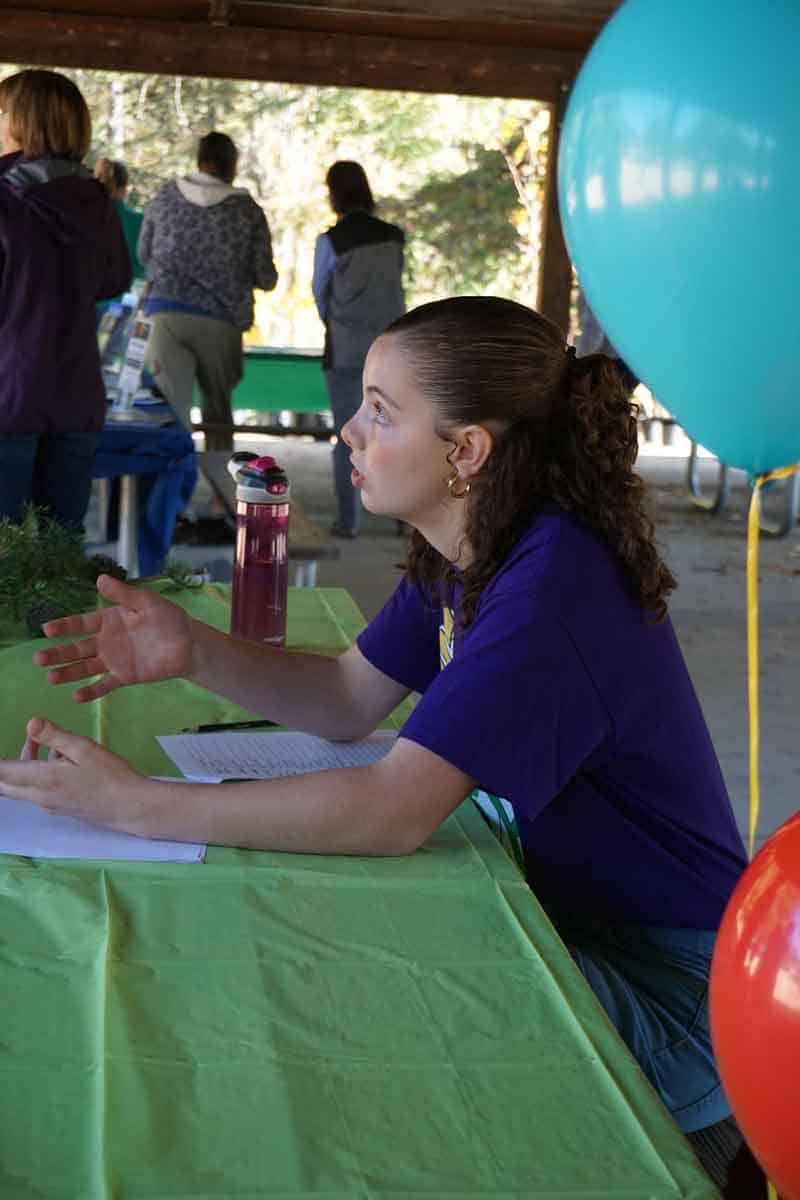
Marshall Cutchin: What’s your favorite native plant?
Esther Bonney: Without a doubt, my favorite native plant is the white oak (Quercus alba), and it holds a special place in my heart for several reasons. As the state tree of Maryland, my home, it represents the connection and love I feel for my community and my commitment to preserve our native landscapes. Beyond its ecological significance, the white oak’s history is incredible. The tree is often used as a symbol for peace, calmness, rebirth, and strength. In North American culture, it is a historical symbol of peace and calmness, with many communities planting white oaks to cultivate a calm space and sense of peace. The trees grow to be about 60 feet tall and will never look exactly the same. To me it embodies resilience and individuality.
My first time standing in the presence of a fully mature white oak—at which point I was familiar with the species—was a kind of spiritual experience for me. It was the most beautiful thing I had ever seen. It brought back thoughts and memories I never knew I had forgotten. They’re just magical.
Marshall Cutchin: If someone wants to support the work that Nurture Natives is doing, what’s the best way for them to get involved?
Esther Bonney: Plant natives! Native biodiversity is declining, however, its preservation remains within reach of everyone. Supporting Nurture Natives is as simple as planting native gardens, reducing lawn space, and sharing knowledge about local ecosystems within communities. Actively engage and support legislative actions that safeguard native species.
If you’re interested in volunteering at our events, donating to our cause, or spreading the word about our mission, please visit our website at NurtureNatives.org or reach out to us directly to learn more about how you can get involved and make a difference in your community. Whether it’s planting native gardens, advocating for environmental policy change, or raising awareness about mental health issues, there are countless ways to contribute to our mission and help create a brighter future for both our youth and our environment. Follow us on Facebook @Nurture Natives and Instagram @Nurture_Natives to keep up with our journey! Through collective action and individual commitment, I have no doubt that our generation will be successful in nurturing thriving native ecosystems.
Header image credit: “Quercus-alba-white-oak-hdr-0a” by Adamantios is licensed under CC BY-SA 3.0.
